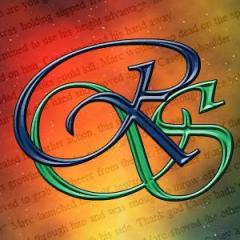Writing Tip Writing Tip: Grammar Rodeo #1
Today's blog is courtesy of Cia! Ever wondered which is the correct word to use when faced with lay/lie? You're not alone and Cia has put together a very informative blog entry to help, it even includes tips and tricks for when you're really not sure. Thanks Cia for taking the time to give us Grammar Rodeo #1!
Grammar Rodeo #1
Tips and Tricks for wrangling those Pesky Word Choices!
Who and Whom
Okay, I hate this one, even though it’s relatively simple! Let’s make it easy: Who is used as a subject of the verb. It describes the person doing whatever the action word says is happening. Whom is the object of the verb. That means whatever the action is, it is happening to that person.
Examples:
Rick just knew who spilled the beans. (Who spilled the beans—so they did the action spilled the beans)
Rick has a crush on whom? (The subject he ‘has’ a crush is on the whom in this sentence)
Easy Tip: Substitute he and him. If he sounds better, you usually use the word who. If him sounds better, you usually use the word whom.
Examples:
Rick just knew he spilled the beans. or Rick just knew him spilled the beans.
Rick has a crush on he? or Rick has a crush on him?
Lay vs. Lie
This is another one I constantly flub, much to my dismay. Both are very similar, but, when used correctly, lay and lie indicate very different things.
Lay means to put an object down. That means the subject is putting the object—book, pillow, plate—down on something.
Lie means to be, rest, assume a horizontal position. So that means the subject’s bod is actually in that position, and not moving an object.
The water gets a LOT murkier when you start hitting past tense because lay becomes laid and lie becomes lay. Yep, gotta love the English language. And there’s more below, after the present and past examples, so keep reading!
Tip: What the subject (character) is doing is key in knowing which to use, no matter what tense you’re writing in. If the subject is moving themselves, you use lie (present) or lay (past). If the subject (character) is moving an object you use lay (present) or laid (past).
Examples:
Present tense:
I lay down the pencil beside my completed paper. (the pencil is being lay down by I)
I lie down after an exhausting homework session. (the person “I” is moving to lie down)
Past tense:
I laid down the pencil beside my completed paper. (The person, I, put the pencil down)
I lay down after an exhausting homework session. (The person, I, hit the sheets after the homework session)
There are present and past participles too, depending on ‘helping’ verbs, just to make it even more fun, but the rule still stands on what is moving into that horizontal position.
Examples:
Present Participle:
I am laying the pencil down beside my completed paper. (helping verb: am)
I was lying down after an exhausting homework session. (helping verb: was)
Past Participle:
I had laid down the pencil beside my completed paper. (helping verb: had)
I had lain down after an exhausting homework session. (helping verb: had)
Tip Chart:
Lay (moving an object) Present: Lay Past: laid Present Participle: laying Past Participle: laid
Lie (subject actually moving) Present: lie Past: lay Present Participle: lying Past Participle: lain
-
 8
8







17 Comments
Recommended Comments
Create an account or sign in to comment
You need to be a member in order to leave a comment
Create an account
Sign up for a new account in our community. It's easy!
Register a new accountSign in
Already have an account? Sign in here.
Sign In Now